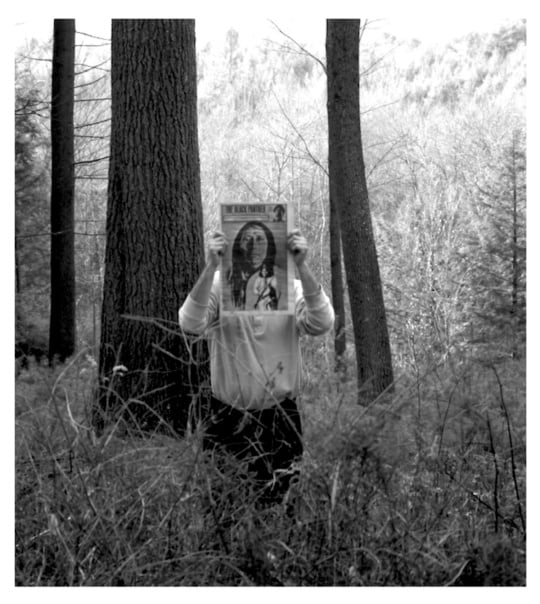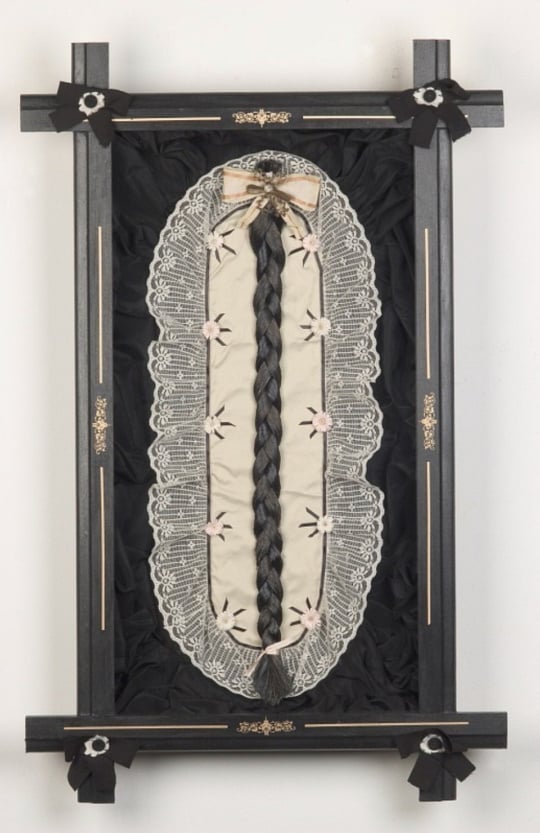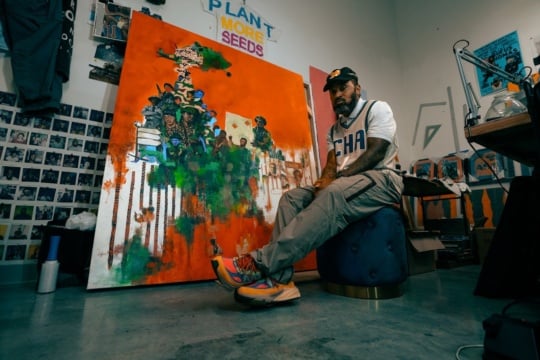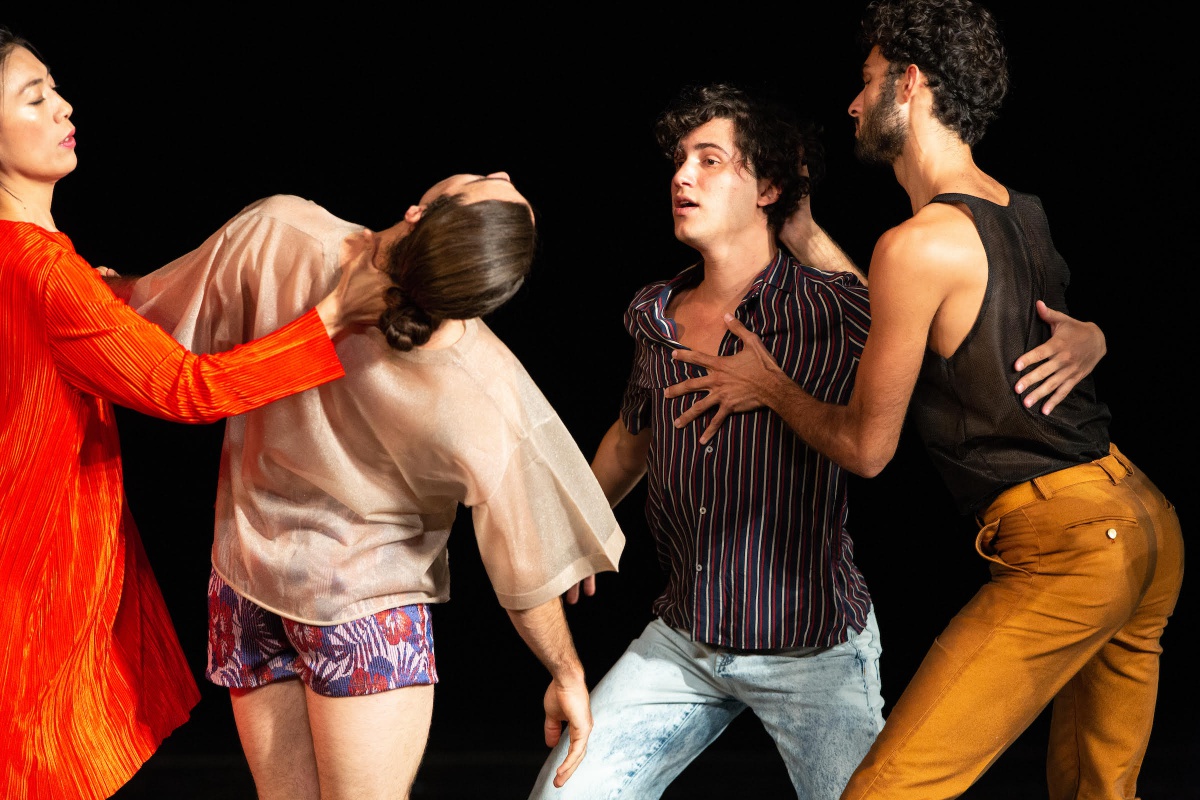
There was something about the little trip-step that occasionally broke the performers’ unison walking pattern executed with laser intensity and fluid intention as one of the opening salvos of Tere O’Connor‘s new work, Long Run, at Duke’s Reynolds Industries Theater on July 10-11. The interrupting hiccup in the pattern signaled the redemptive potential of complexity.
Presented as part of the American Dance Festival, the hour-and-a-quarter-long piece unfolded in ebbs and flows, paragraphic episodes in which the company of eight dancers formed and reformed in numeric variations — ones, twos, threes, fours, fives set dum perficiatur (Latin for “until the set is completed”]. There were moments at which we bore witness to faltering bodied subjectivities, where the dancers took turns caring for one another, catching someone when they fell or bolstering another’s weight against gravity, mitigating the possibility of collapse.
The number of performers is always salient — and eight does certain specific things. First and foremost, eight allows for four duets — sets of two — which to my mind has something to do with relating, with relationship. The sense of human interrelationship also ebbed and flowed throughout the work, emerging in the ways in which the performers’ gaze would at times be turned to one another or directly to us, the audience, as if to say: We recognize this moment in all its complexity, we recognize that we are up here and you are down there, we recognize that we are in the formalized light of this proscenium, that our bodies are trained in a certain way, that we have worked incredibly hard to get to where we are as we perform here, in this moment.
I had a singing teacher who used to emphasize that the word “per-form” means “to make the form clear.”
As I noted in my “Q” in the Q&A after the performance, I saw in the even number of eight and the attendant potential for sets of two an emergent duality (not to be confused with “coupling” or even what in some contexts is referred to as a “pas de deux”). Given O’Connor’s description of his project as inhabiting a realm of the philosophical, I wanted to hear some of his thoughts about the possibility of such duality. He had much to say, but one of the key terms centered around the construct of human mortality. One of the dualistic expressions that I perceived in the performed passages included “disparities versus alignments,” as I scrawled in my notes; another was apparent effort versus sheer effortlessness.
Of the steady stream (a better metaphor would be coursing river) of sections, one involved what I thought of as an “ectomorph duet” between a male and a female performer, both tall and lanky, all arms and legs. The pairing provided insight into a sense of the indexical at work, in this case a category that accrued to body-type, to tallness, to the joys of seeing these two throw down with their own bad selves, a celebration of embodied kinetic possibility performed with gusto. Another indelible moment arrived with a downstage trio – two men and a woman. The section began with the dancers floor-bound, prone, until the woman, now upright, still seated on the floor, with her back to the audience, succumbed to a violent whipping of her head and body. As she took to her feet she virtually erupted, flying around the stage in volatile and explosive swings of her arms, legs and torso. The sudden activation was staggering.
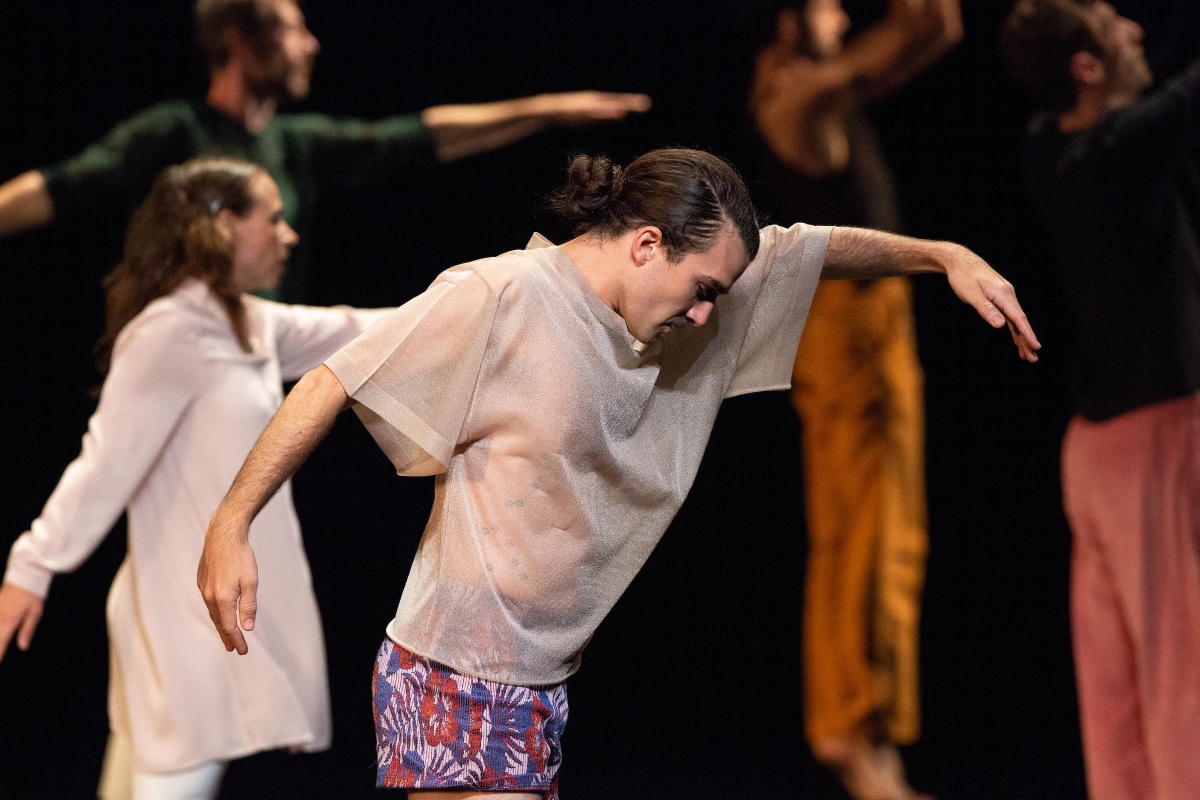
Here I must acknowledge one of the endless aspects of O’Connor’s work that engages me so totally as a viewer, aside from perhaps simply never knowing what might occur next: the virtuosity and total commitment of his dancers. There is a through-line of agency that I see in full effect within each of his performers. I would say both agency and a form of selflessness, that allows them to give fully to the form (to make the form clear) and to only allow their pyrotechnical potential to be revealed in almost painterly flourishes. (I invoke the painterly here in honor of O’Connor’s stated appreciation of that form.)
In this regard – that is, with regard to the question of virtuosity – the breathless intensity of Long Run brought us through a maelstrom of dynamic changes, bringing our own breath, body and focus down to the quietest minimal gesture, to the throbbing force that pulsed through the entire company. There was a midway point that almost served as an intermission, during which the full company lay down in semi-darkness on the stage floor, with a calm drone for a soundtrack (also created by O’Connor. This midway point of quietude transcended what we as an audience expect in the idea of something-rather-than-nothing in a dance performance. It went on long enough that I was able to actually let go (which is not my personal strong suit), to breathe and be in the space with the audience and the dancers and the sound and the stillness. It was a gift for all of us, no doubt the dancers too. It got me thinking about how dance serves us right now, when we are bombarded with the pressures of what is occurring in our nation, that we might connect in wordless relationship (save for the two words of the work’s title, which to a certain extent tether us to the this dangerous moment and the long arc of justice), that we might connect with something other than, as O’Connor noted about the current condition, a preponderance of facts and lies.
“Long Run” was performed on July 10 and 11 at the Reynolds Industries Theater at Duke University as part of the American Dance Festival. It will be performed at New York University’s Skirball Center on October 12 and 13.
Performers: Simon Courchel, Marc Crousillat, Eleanor Hullihan, Emma Judkins, Joey Loto, Silas Riener, Lee Serle, Jin Ju Song-Begin.

